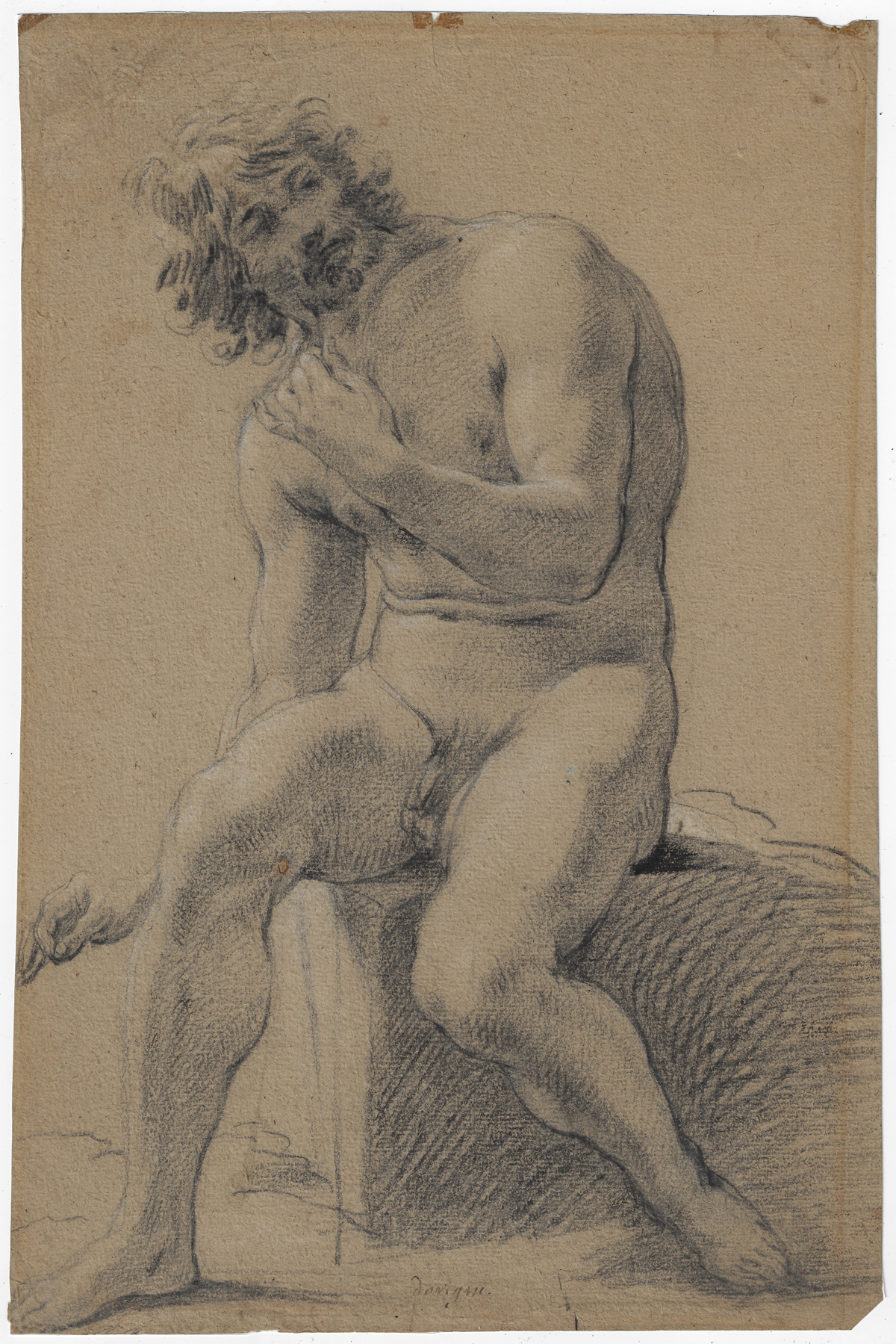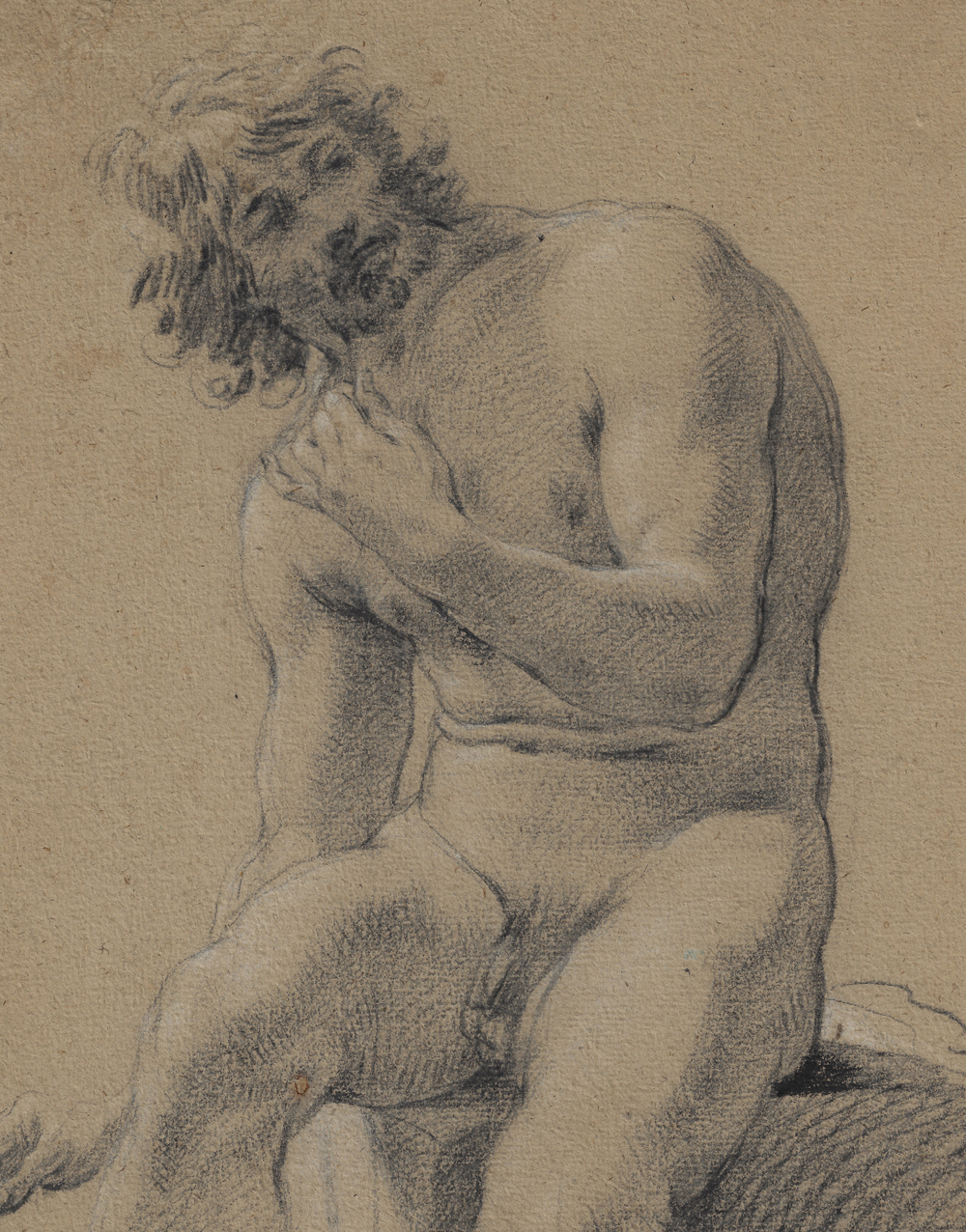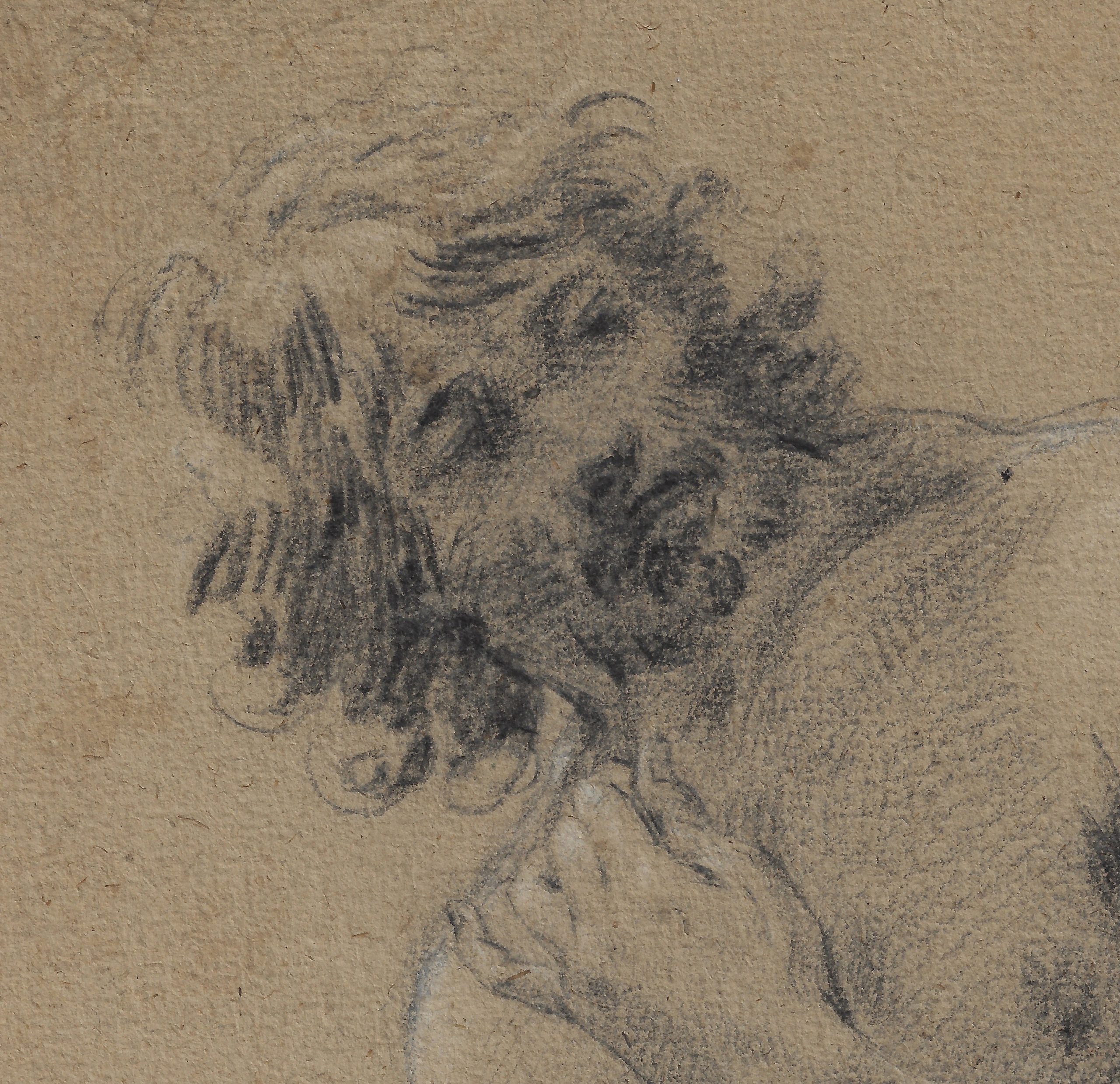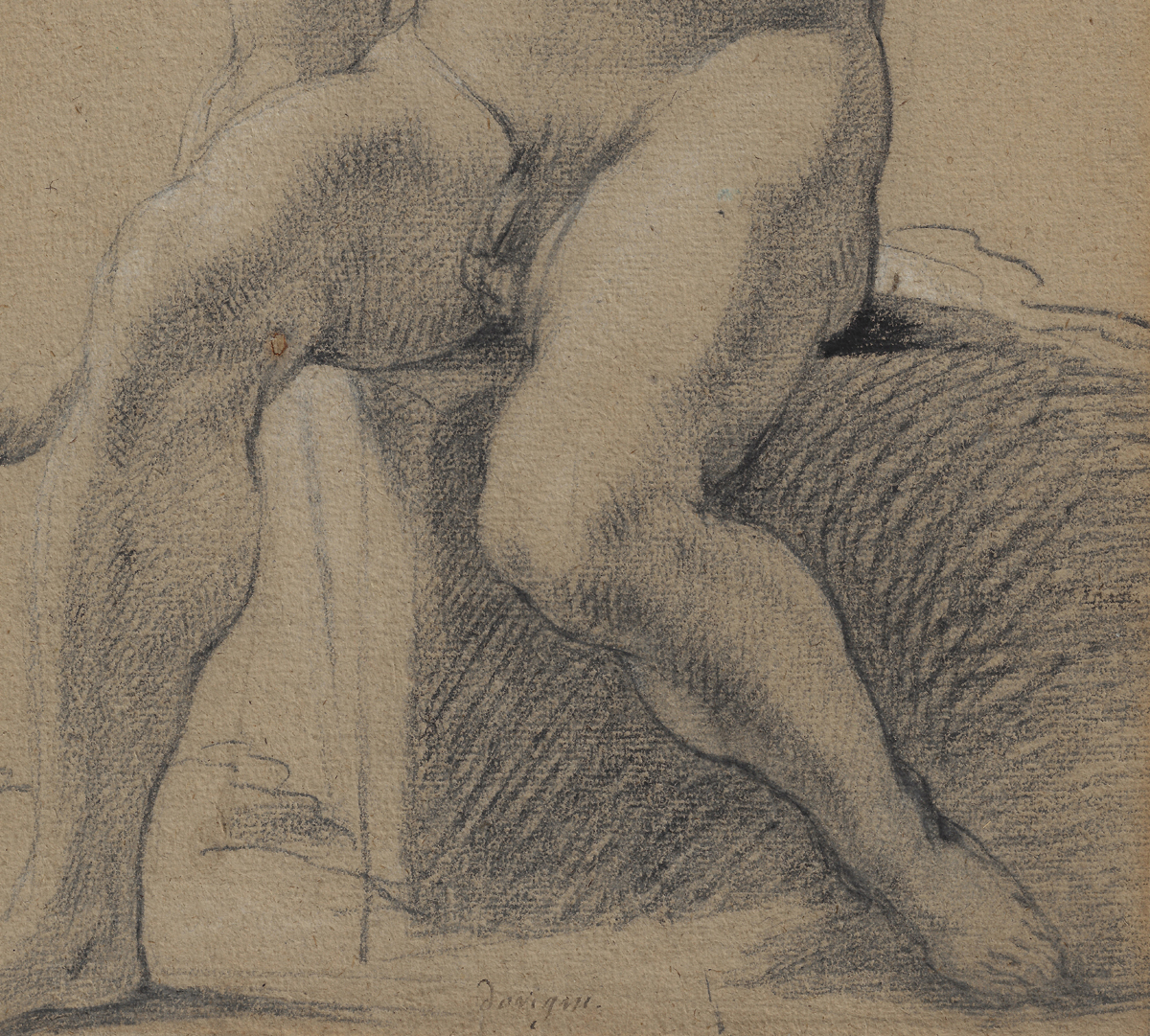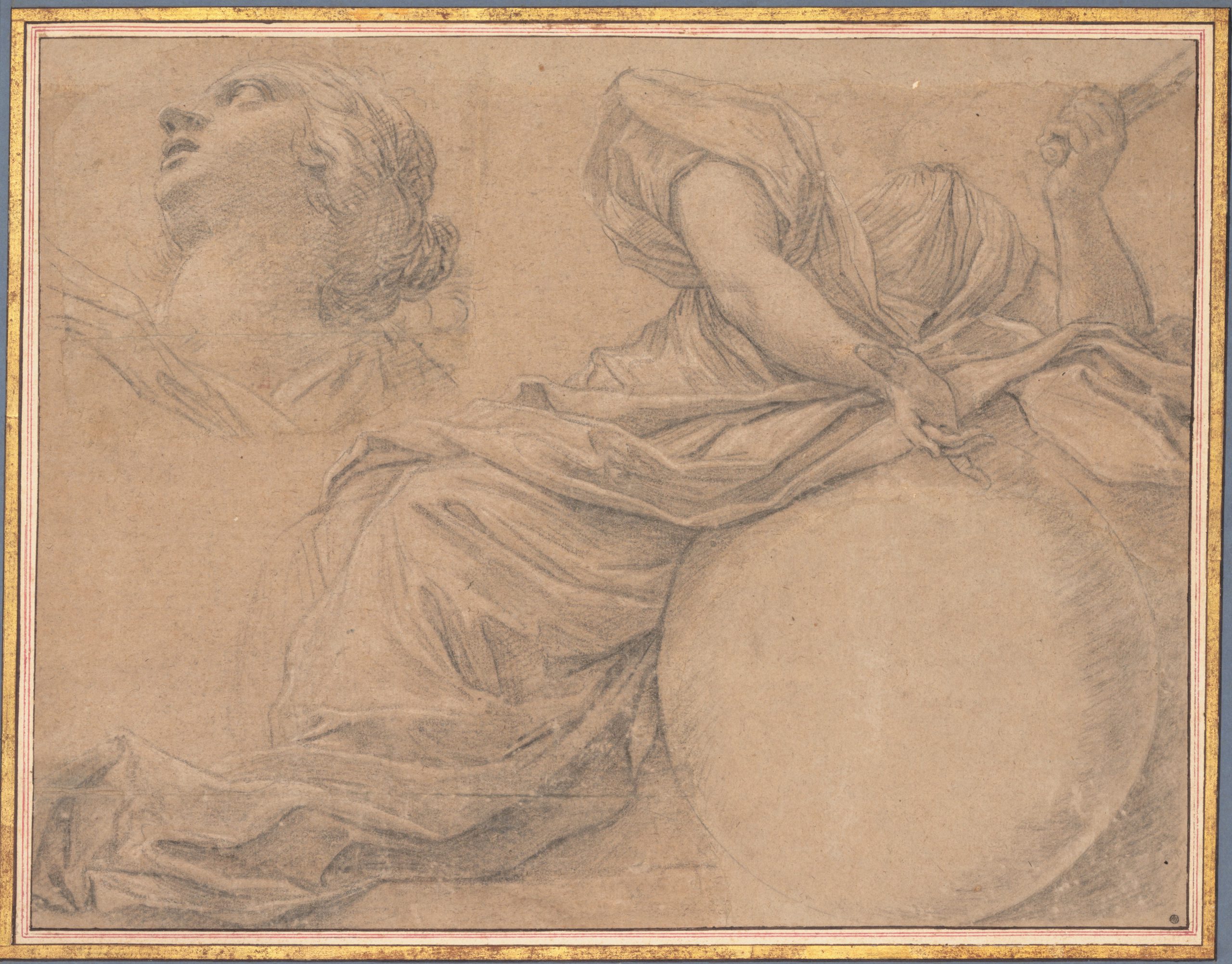MICHEL DORIGNY (Saint-Quentin 1616 – 1665 Paris)
Michel Dorigny (Saint-Quentin 1616 – 1665 Paris)
Study of a Seated Male Nude
Black chalk, heightened with white, on buff paper, 400 x 265 mm (15.8 x 10.5 inch)
With inscription ‘dorigny’ (pen and brown ink, lower centre) and numbers and price codes in graphite on the verso
Provenance
Private collection, The Netherlands
***
Born in Saint Quentin in 1616, Michel Dorigny was first appentriced to Georges Lallemand in 1630, and then became the pupil and son-in-law of Simon Vouet (1590–1649); he was renowned for his activity as an engraver and was Vouet’s principal engraver.1 He was admitted to the Académie Royale de Peinture et de Sculpture in 1663. Dorigny was also active as a decorative painter and holds a prominent position in the history of decorative painting in mid-seventeenth-century Paris.
Dorigny’s drawn oeuvre consists of some 150 sheets.2 This sheet is probably a study for a biblical or mythological scene that would have been realised either as a fresco, decorative work or easel painting. Like his master Vouet, Dorigny produced many detailed studies on paper for his ambitious compositions. Whilst in a similar style and using the same technique, Dorigny’s works differ from that of his master by a greater firmness, the treatment of the lines is more precise and the contours more defined. This sensitive nude study belongs to a group of figure studies with pupil-less eyes, with enhanced outlines and heavy hatching, largely heightened with white, in the manner of Vouet, of which an example is in the Getty Museum in Los Angeles.3 Other similar sheets are in the École des Beaux-Arts, Paris and in a private collection.4 Furthermore our drawing can be compared to Dorigny’s Study for the Muse Urania in the Metropolitan Museum in New York (fig.).5
This recently discovered sheet is an interesting addition to Dorigny’s drawn oeuvre. We are grateful to Damien Tellas for supporting Dorigny’s authorship; this drawing will be included in his forthcoming catalogue raisonné of the artist’s works.
SOLD
1. For Dorigny, see: Damien Tellas, ‘L’”Apollon et les muses” de Michel Dorigny’, Bulletin du Musée Hongrois des Beaux-Arts, 2018, pp. 121-136
2. Damien Tellas, Michiel Dorigny 1616–1665. Cahier du dessin français No. 21, Paris 2019.
3. Inv. no. 87.GB.104; G. Goldner and L. Hendrix, European Drawings. Catalogue of the Collection, Los Angeles 1992, vol. II, no. 77, repr.
4. Tellas, op. cit. (note 2), nos 16 and 7 resp.
5. Black chalk, 293 x 378 mm, inv. no. 1970.242.1; Jacob Bean, Lawrence Turčić, 17th century Italian Drawings in The Metropolitan Museum of Art, New York, 1979, cat. no. 359, fig. no. 359, p. 272, ill.
